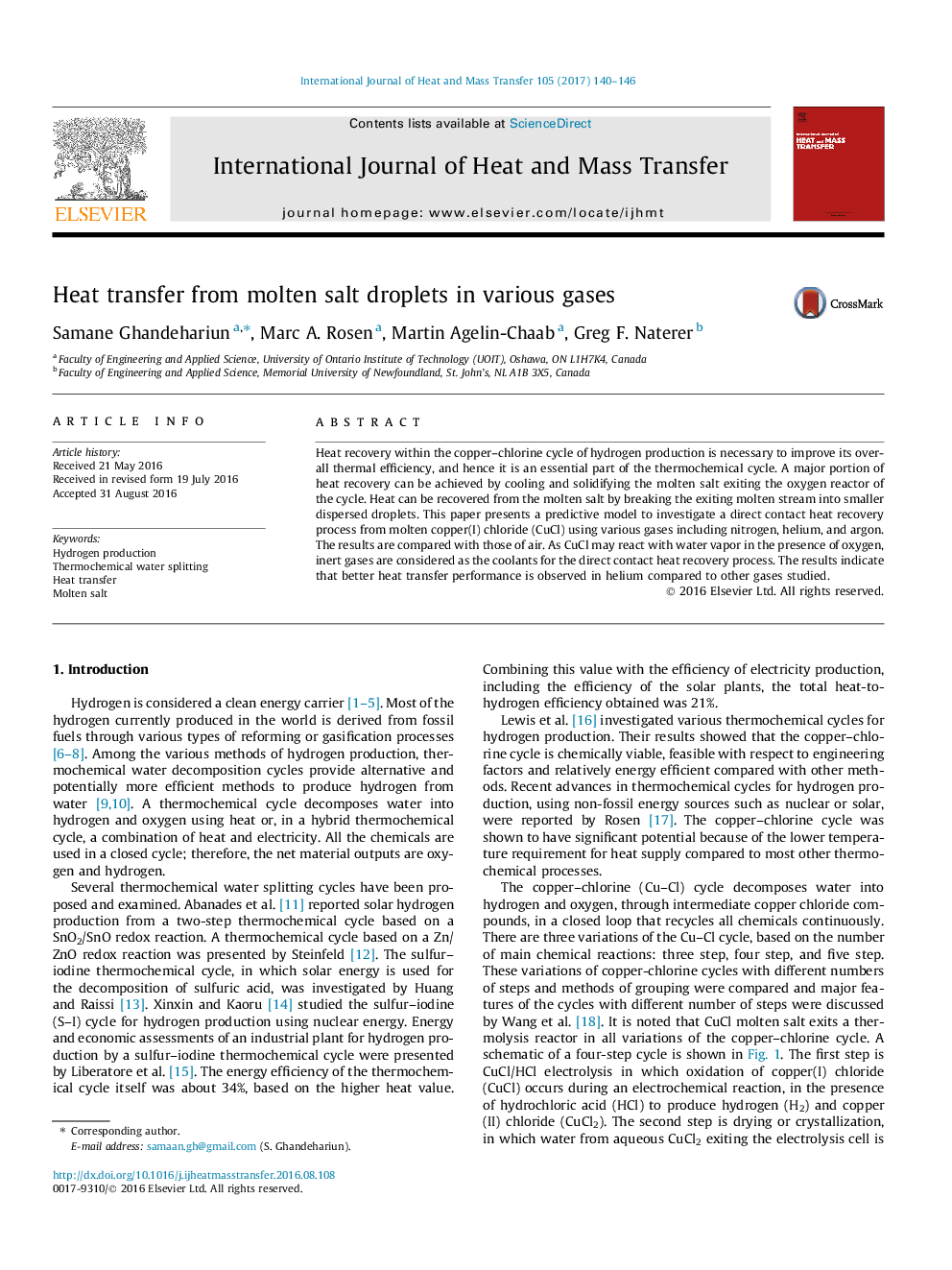| Article ID | Journal | Published Year | Pages | File Type |
|---|---|---|---|---|
| 4994677 | International Journal of Heat and Mass Transfer | 2017 | 7 Pages |
Abstract
Heat recovery within the copper-chlorine cycle of hydrogen production is necessary to improve its overall thermal efficiency, and hence it is an essential part of the thermochemical cycle. A major portion of heat recovery can be achieved by cooling and solidifying the molten salt exiting the oxygen reactor of the cycle. Heat can be recovered from the molten salt by breaking the exiting molten stream into smaller dispersed droplets. This paper presents a predictive model to investigate a direct contact heat recovery process from molten copper(I) chloride (CuCl) using various gases including nitrogen, helium, and argon. The results are compared with those of air. As CuCl may react with water vapor in the presence of oxygen, inert gases are considered as the coolants for the direct contact heat recovery process. The results indicate that better heat transfer performance is observed in helium compared to other gases studied.
Related Topics
Physical Sciences and Engineering
Chemical Engineering
Fluid Flow and Transfer Processes
Authors
Samane Ghandehariun, Marc A. Rosen, Martin Agelin-Chaab, Greg F. Naterer,
